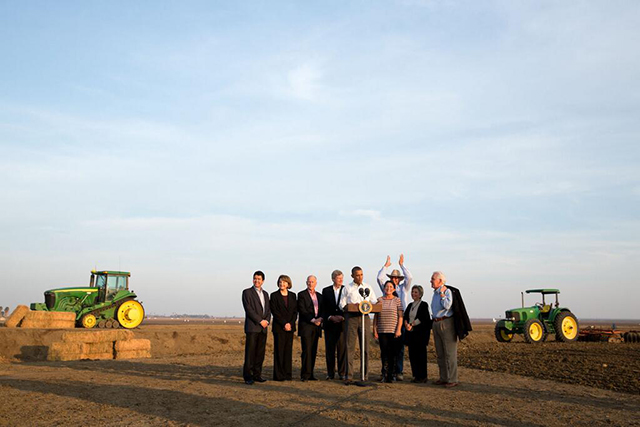While scientists continue to debate global warming, it’s undeniable that the federal government has had an active hand in exacerbating California’s drought.
President Obama flew to Fresno, California, last Friday to announce a drought relief package and speak on climate change’s influence. Although no single weather event can be attributed to climate change, the White House painted the drought as part of a larger picture of the devastation wreaked by global warming.
Is it, though?
Amid environmentalist litigation in 2008, the U.S. Fish and Wildlife Service recalled a permit allowing farmers to use irrigation pumps in the Sacramento Delta, claiming that the pumps were a direct threat to the delta smelt fish. A previous permit had come to the opposite conclusion.
Hundreds of thousands of acres of water have since been diverted from farmlands. The Farm Bureau predicts that between 400,000 acres and 500,000 acres of crops will be lost. Department of Water Resources director Mark Cowin estimates that if it weren’t for the federal government’s irrigation restrictions, the number would be 200,000 acres less.
In the wake of the drought brought on by the water diversion, unemployment and food prices have soared in some areas. As Reason reports, in 2012, the U.S. House of Representatives introduced “a bill that would turn the pumps back on.” Had they been successful, the drought might not have inflicted as much damage as it is currently doing.
The President also unveiled his plans to create a $1 billion “Climate Resilience Fund” last Friday, but his solution addresses the wrong problem. The fund would channel money to climate research, technology and infrastructure development, risk reduction, and “community preparedness.”
This spending is duplicative at best, even if you agree with the most alarmist environmentalists on the effects of global climate change. Last year, federal spending on climate change exceeded $22 billion. Similar to the proposed “Climate Resilience Fund,” this money also went to research and investment in “green technology” both at the local and national level. Seventeen different agencies engage in these expenditures, from the Environmental Protection Agency to the Departments of Defense and Treasury.
The situation in California is another example of what Heritage has been saying makes poor environmental policy. The best way for people to deal with environmental issues, be they global warming or otherwise, is not government spending programs but having the economic development and resources to respond to environmental issues as they arise.
President Obama would like to fault manmade climate change for this environmental disaster, but it is more likely that his own Administration played a larger and more direct role in creating California’s troubles while proposing to add to the taxpayers’ ever-growing federal debt burdens.
Mallory Carr is currently a member of the Young Leaders Program at The Heritage Foundation. For more information on interning at Heritage, please click here.




























